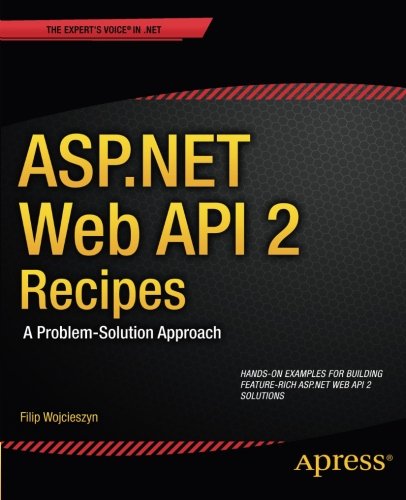

Most ebook files are in PDF format, so you can easily read them using various software such as Foxit Reader or directly on the Google Chrome browser.
Some ebook files are released by publishers in other formats such as .awz, .mobi, .epub, .fb2, etc. You may need to install specific software to read these formats on mobile/PC, such as Calibre.
Please read the tutorial at this link. https://ebooknice.com/page/post?id=faq
We offer FREE conversion to the popular formats you request; however, this may take some time. Therefore, right after payment, please email us, and we will try to provide the service as quickly as possible.
For some exceptional file formats or broken links (if any), please refrain from opening any disputes. Instead, email us first, and we will try to assist within a maximum of 6 hours.
EbookNice Team

Status:
Available0.0
0 reviewsASP.NET Web API 2 Recipes provides you with the code to solve a full range of Web API problems and question marks that you might face when developing line-of-business applications. ASP.NET Web API Recipes gives you an in-depth explanation for each of these scenarios and shows you how to use Web API with a vast array of .NET application development tools and external libraries, to solve common business problems. Find out how you can build custom web services with ASP.NET Web API more efficiently than ever.
What you’ll learnASP.NET Web API 2 Recipes is for application developers who are creating line-of-business applications using the .NET Framework 4.5, with Visual Studio 2012 or Visual Studio 2013. Experience with ASP.NET Web API is not assumed, but you'll have experience building ASP.NET applications and working with HTTP APIs.
Table of ContentsChapter 1: ASP.NET Web API in ASP.NET
Chapter 2: Hosting ASP.NET Web API outside of IIS
Chapter 3: Routing
Chapter 4: Content Negotiation and Media Types
Chapter 5: Configuration and Customization
Chapter 6: Embracing HTTP with ASP.NET Web API
Chapter 7: Exceptions, Troubleshooting and Documenting
Chapter 8: Cross Domain and Push Communication
Chapter 9: Dependency Injection
Chapter 10: Securing an ASP.NET Web API Service
Chapter 11: Testing Your ASP.NET Web API
Chapter 12: OData